
by Rochelle Saldanha | May 30, 2017 | BizTalk Community Blogs via Syndication
At BizTalk360, we provide some essential services which benefit the customers and our partners immensely. Businesses trust and use our expertise to assist them on a wide range of projects relating to their BizTalk needs. This includes, but is not limited to:
- Setting up our monitoring product BizTalk360 and integrating their BizTalk servers.
- Advising on the best practices used in the community for monitoring.
- Helping in BizTalk migration projects via support and licensing discounts.
- In-Depth training and advice on end to end BizTalk solutions.
There are 3 types of services we offer, namely:
- Product Demos
- Best Practice and Installation service
- In-Depth Training for BizTalk360
Product Demos
Demos can turn prospects into customers. They combat client concerns and provide proof what the product can do for you (our customers). Customers often want to see it in action before they commit to a purchase. We also offer a Free Trial as well.
Free Trial of BizTalk360
It gives the customer the best opportunity to experience what it would be like to own the product
Most of the times, we are approached by the customers themselves who googled and came across our product BizTalk360 and want to know more about it.
Sometimes we are approached by consultants who say “We love your product and need your help to convince Management to get it for our company”.
We also give Demos to our Partners as well to keep them well-equipped and confident in the product.
BizTalk360 Demo – Request one today!
We avoid giving generic demos. We try to learn about our audience’s specific challenges and what they want to achieve and tailor the demo accordingly. We want customers to feel empowered and be confident of the product they are going to be purchasing. The customer should be happy that BizTalk360 is going to be a good fit for their requirements.
We have also printed some documentation which outlines all the main features of BizTalk360 – What’s the business value of using Biztalk360, which we will be giving out at our upcoming INTEGRATE 2017 event.
Best Practice installation and configuration
Customers like hearing about best practices, especially if they’re easy to implement and will result in an immediate benefit. We provide this service to help set up BizTalk360 at the customer site. While the actual setup can be quite simple and quick to setup, depending on your environment you might face some issues. We provide a 2-hour service (chargeable) where we set up the product (via a web call) and go through a few basic setup tasks
- SMTP settings – These are the first thing to setup to ensure that the notifications for any alarm are successfully sent.
- User access policy – Add user specific permissions to view different parts of the product.
- Setting up Alarms/Monitoring Dashboard – Monitoring artifacts is the core of our product. We explain the types of alarms available, which are more suited to certain scenarios. The dashboard helps you to see all the status of artifacts mapped in 1 look.
- Monitoring of SQL Servers
- Event Log setup – This will enable you to view Windows logs across multiple BizTalk servers
- Purging Policy – This will help set up purging to avoid bloating of the database.
Often a simple task can also turn out to be complex when dealing with multiple environments. A lot of our customers also take this opportunity for their BizTalk administrators to get a quick crash course in the product to see how they can utilize the product in the best way possible.
Some important troubleshooting steps during installation
- Try to run the MSI using logs, so if any issues occur they are detailed in the logs.
- Once the installation is complete successfully, if the home page is not displayed and you see any errors like Icons/images missing – Check the ‘Static content’ tickbox is activated under ‘IIS’ in Server Manager -> Add Roles & Features
- If you are Installing BizTalk360 on a complete standalone server and there is no trace of the remote BizTalk environment we are going to configure. Simply enter the corresponding values for BizTalkMgmtSqlInstanceName and BizTalkMgmtDb columns as shown below.
- If it doesn’t help, kindly run the troubleshooter tool on the machine where BizTalk360 is installed. Troubleshooter will help you to find any permissions missed.
We are soon releasing a ‘User Guide’ of around 400 pages for the basic setup tasks required when you install BizTalk360 – written by Eva De Jong and Lex Hegt. Please look out for it at our ‘INTEGRATE 2017’ event.
BizTalk360 Training
BizTalk360 has a lot of features which can be quite overwhelming for someone new. Many companies appreciate an in-depth intensive BizTalk360 training. This is an 8-hour training that we provide and is given by our BizTalk Server & BizTalk360 Product experts.
This session is covered over 4 days in 2-hour slots (or as desired by customer). The main idea is for customers to get a better understanding of how the product can help them achieve certain scenarios. Our experts interact with the audience and understand the environment and architecture and what customizations they want to achieve.
Initially, they go through the various features available in BizTalk360, then on subsequent days the trainer does a deep dive and goes through more technical complicated scenarios and how the customer can benefit from the product. Many customers use this as a training session for their technical staff. This is conducted via a remote webinar session (GoToMeeting) and is a very interactive and a good learning experience for most customers. The session is not a straightforward monologue but it provides plenty of space for the customer to pose questions regarding their own circumstances.
Exciting upcoming Services/Training
We also have a new training for ‘BizTalk Server Administrators’ run by our very own BizTalk expert Lex Hegt.
The audience would be Systems Administrators who deploy and manage (multi-server) BizTalk Server environments, SQL Server DBA’s who are responsible for maintaining the BizTalk Server databases or BizTalk Developers who need to support a BizTalk environment.
During this course, attendees will get a thorough training for everything they need to know to properly administer BizTalk Server.
Some of the course topics are:
- Installing and configuring BizTalk Groups
- Operating and monitoring BizTalk Server
- Deployment of BizTalk applications
- Periodical administrative tasks and best practices.
Keep tuned to our website for more such information or contact support@biztalk360.com to arrange the same.
by BizTalk Team | May 30, 2017 | BizTalk Community Blogs via Syndication
We are happy to announce the 2nd Cumulative updates BizTalk Server 2016.
This cumulative update package for Microsoft BizTalk Server 2016 contains hotfixes for the BizTalk Server 2016 issues that were resolved after the release of BizTalk Server 2016.
NOTE: This CU is not applicable to environment where Feature Pack 1 is installed, there will be a new Cumulative Update for BizTalk Server 2016 Feature Pack 1 coming soon.
We recommend that you test hotfixes before you deploy them in a production environment. Because the builds are cumulative, each new update release contains all the hotfixes and all the security updates that were included in the previous BizTalk Server 2016 CUs. We recommend that you consider applying the most recent BizTalk Server 2016 update release.
Cumulative update package 6 for Microsoft BizTalk Server 2016:
- BizTalk Server Adapter
- 4010116: FIX: “Unable to allocate client in pool” error in NCo in BizTalk Server
- 4013857: FIX: The WCF-SAP adapter crashes after you change the ConnectorType property to NCo in BizTalk Server
- 4011935: FIX: MQSeries receive location fails to recover after MQ server restarts
- 4012183: FIX: Error while retrieving metadata for IDOC/RFC/tRFC/BAPI operations when SAP system uses non-Unicode encoding and the connection type is NCo in BizTalk Server
- 4013857: FIX: The WCF-SAP adapter crashes after you change the ConnectorType property to NCo in BizTalk Server
- 4020011: FIX: WCF-WebHTTP Two-Way Send Response responds with an empty message and causes the JSON decoder to fail in BizTalk Server
- 4020012: FIX: MIME/SMIME decoder in the MIME decoder pipeline component selects an incorrect MIME message part in BizTalk Server
- 4020014: FIX: SAP adapter in NCo mode does not trim trailing non-printable characters in BizTalk Server
- 4020015: FIX: File receive locations with alternate credentials get stuck in a tight loop after network failure
- BizTalk Server Accelerators
- 4020010: FIX: Dynamic MLLP One-Way Send fails if you enable the “Solicit Response Enabled” property in BizTalk Server
- BizTalk Server Design Tools
- 4022593: Update for BizTalk Server adds support for the .NET Framework 4.7
- BizTalk Server Message Runtime, Pipelines, and Tracking
- 3194297: “Document type does not match any of the given schemas” error message in BizTalk Server
- 4020018: FIX: BOM isn’t removed by MIME encoder when Content-Transfer-Encoding is 8-bit in BizTalk Server
Download and read more here
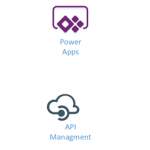
by Gautam | May 28, 2017 | BizTalk Community Blogs via Syndication
Do you feel difficult to keep up to date on all the frequent updates and announcements in the Microsoft Integration platform?
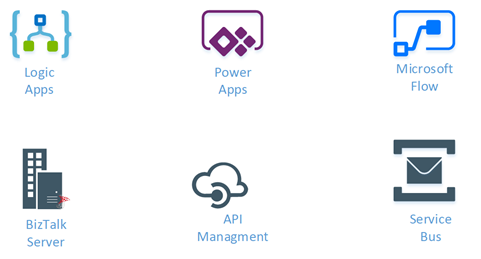
Integration weekly update can be your solution. It’s a weekly update on the topics related to Integration – enterprise integration, robust & scalable messaging capabilities and Citizen Integration capabilities empowered by Microsoft platform to deliver value to the business.
If you want to receive these updates weekly, then don’t forget to Subscribe!
On-Premise Integration:
Cloud and Hybrid Integration:
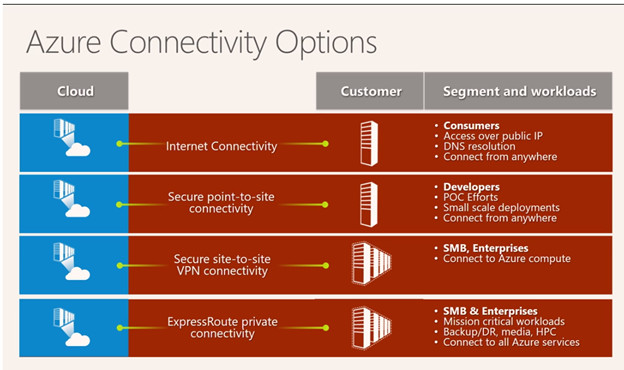
Feedback
Hope this would be helpful. Please feel free to let me know your feedback on the Integration weekly series.

by Steef-Jan Wiggers | May 27, 2017 | BizTalk Community Blogs via Syndication
The month May went quicker than as I realized myself. Almost half 2017 and I must say I have enjoyed it to the fullest. Speaking, travelling, working on an interesting project with the latest Azure Services, and recording another Middleware Friday show. It was tha best, it was amazing!

Month May
In May I started off with working on a recording for Middleware Friday, I recorded a demo to show how one can distinguish Flow from Logic Apps. You can view the recording named Task Management Face off with Logic Apps and Flow.
The next thing I did was prepare myself for TUGAIT, where I had two sessions. One session on Friday in the Azure track, where I talked about Azure Functions and WebJobs.
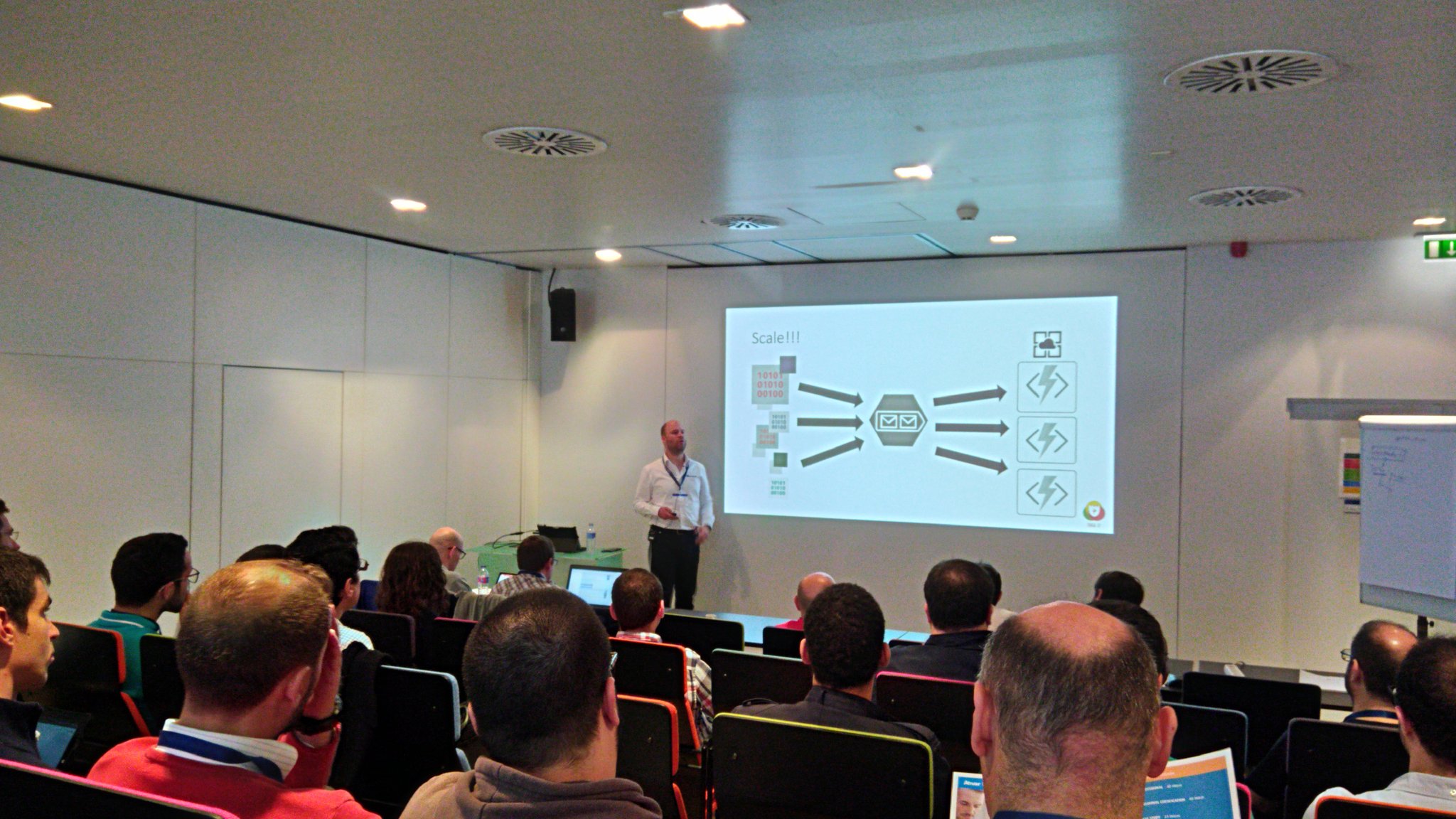
And one session on Saturday in the integration track about the number of options with integration and Azure.
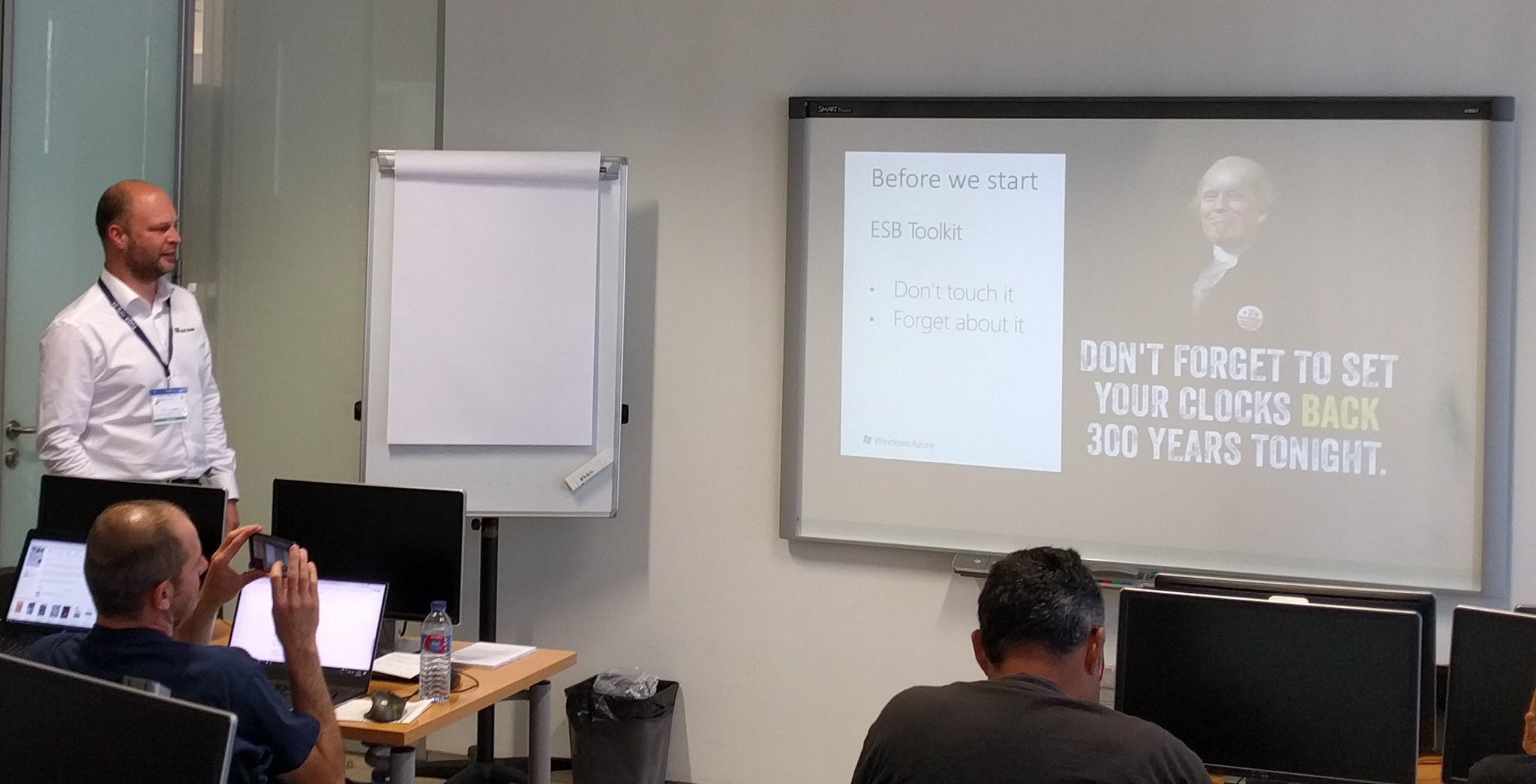
I enjoyed both and was able to crack a few jokes. Especially on Saturday, where kept using Trump and his hair as a running joke.
TUGAIT 2017 was an amazing event and I enjoyed the event, hanging out with Sandro, Nino, Eldert and Tomasso and the food!
During the TUGA event I did three new interviews for my YouTube series “Talking with Integration Pros”. And this time I interviewed:
I will continue the series next month.
Books
In May I was able to read a few books again. I started reading a book about genes. Before I started my career in IT I was a Biotech researcher and worked in the field of DNA, BioTechnology and Immunology. The book is called The Gene by Siddharta Mukherjee.

I loved the story line and went through the 500 pages pretty quick (still two weeks in the evenings). The other book I read was Sapiens by Yuval Noah Harari. And this book is a good follow up of the previous one!

The final book I read this month was about Graph databases. In my current project we have started with a proof of concept/architecture on Azure Cosmos DB, Graph and Azure Search.
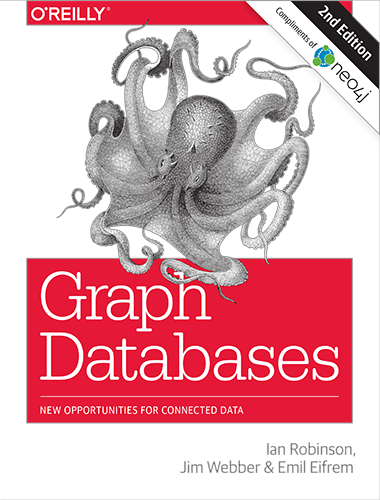
The book helped me understand Graph databases better.
Music
My favorite albums that were released in May were:
- God Dethroned – The World Ablaze
- Voyager – Ghost Mile
- Sólstafir – Berdreyminn
- Avatarium – Hurricanes And Halos
- The Night Flight Orchestra – Amber Galactic

There you have it Stef’s fourth Monthly Update and I can look back again with great joy. Not much running this month as I was recovering a bit from the marathon in April. I am looking forward to June as I will be speaking at the BTUG June event in Belgium and Integrate 2017 in London.
Cheers,
Steef-Jan
Author: Steef-Jan Wiggers
Steef-Jan Wiggers is all in on Microsoft Azure, Integration, and Data Science. He has over 15 years’ experience in a wide variety of scenarios such as custom .NET solution development, overseeing large enterprise integrations, building web services, managing projects, designing web services, experimenting with data, SQL Server database administration, and consulting. Steef-Jan loves challenges in the Microsoft playing field combining it with his domain knowledge in energy, utility, banking, insurance, health care, agriculture, (local) government, bio-sciences, retail, travel and logistics. He is very active in the community as a blogger, TechNet Wiki author, book author, and global public speaker. For these efforts, Microsoft has recognized him a Microsoft MVP for the past 6 years. View all posts by Steef-Jan Wiggers

by Eldert Grootenboer | May 27, 2017 | BizTalk Community Blogs via Syndication
Last week I was in Lisbon for TUGA IT, one of the greatest events here in Europe. A full day of workshops, followed by two days of sessions in multiple tracks, with attendees and presenters from all around Europe. For those who missed it this year, make sure to be there next time!

On Saturday I did a session on Industrial IoT using Azure IoT Hub. The industrial space is where we will be seeing a huge growth in IoT, and I showed how we can use Azure IoT Hub to manage our devices and do bi-directional communication. Dynamics 365 was used to give a familiar and easy to use interface to work with these devices and visualize the data.

And of course, I was not alone. The other speakers in the integration track, are community heroes and my good friends, Sandro, Nino, Steef-Jan, Tomasso and Ricardo, who all did some amazing sessions as well. It is great to be able to present side-by-side with these amazing guys, to learn and discuss.

There were some other great sessions as well in the other tracks, like Karl’s session on DevOps, Kris‘ session on the Bot Framework, and many more. At an event like this it’s always so much content being presented, that you can’t always see every session you would like, but luckily the speakers are always willing to have a discussion with you outside of the sessions as well. And with 8 different tracks running side-by-side, there’s always something interesting going on.
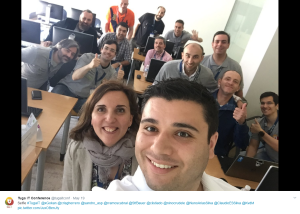
One of the advantages of attending all these conferences, is that I get to see a lot of cities as well. This was the second time I was in Lisbon, and Sandro has showed us a lot of beautiful spots in this great city. We enjoyed traditional food and drinks, a lot of ice cream, and had a lot of fun together.



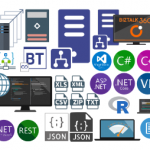
by Sandro Pereira | May 26, 2017 | BizTalk Community Blogs via Syndication
Once again, my Microsoft Integration Stencils Pack was updated with new stencils. This time I added near 193 new shapes and additional reorganization in the shapes by adding two new files/categories: MIS Power BI and MIS Developer. With these new additions, this package now contains an astounding total of ~1287 shapes (symbols/icons) that will help you visually represent Integration architectures (On-premise, Cloud or Hybrid scenarios) and Cloud solutions diagrams in Visio 2016/2013. It will provide symbols/icons to visually represent features, systems, processes and architectures that use BizTalk Server, API Management, Logic Apps, Microsoft Azure and related technologies.
- BizTalk Server
- Microsoft Azure
- BizTalk Services
- Azure App Service (API Apps, Web Apps, Mobile Apps and Logic Apps)
- API Management
- Event Hubs
- Service Bus
- Azure IoT and Docker
- Virtual Machines and Network
- SQL Server, DocumentDB, CosmosDB, MySQL, …
- Machine Learning, Stream Analytics, Data Factory, Data Pipelines
- and so on
- Microsoft Flow
- PowerApps
- Power BI
- Office365, SharePoint
- DevOpps: PowerShell, Containers
- And much more…
Microsoft Integration Stencils Pack v2.5
The Microsoft Integration Stencils Pack v2.5 is composed by 13 files:
- Microsoft Integration Stencils v2.5
- MIS Apps and Systems Logo Stencils v2.5
- MIS Azure Portal, Services and VSTS Stencils v2.5
- MIS Azure SDK and Tools Stencils v2.5
- MIS Azure Services Stencils v2.5
- MIS Deprecated Stencils v2.5
- MIS Developer v2.5 (new)
- MIS Devices Stencils v2.5
- MIS IoT Devices Stencils v2.5
- MIS Power BI v2.5 (new)
- MIS Servers and Hardware Stencils v2.5
- MIS Support Stencils v2.5
- MIS Users and Roles Stencils v2.5
These are some of the new shapes you can find in this new version:
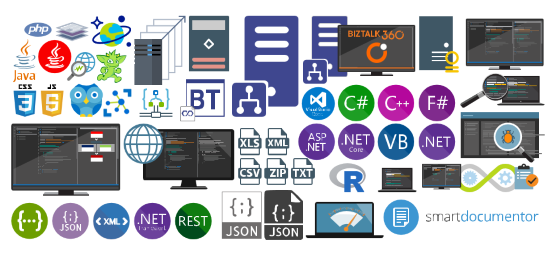
You can download Microsoft Integration Stencils Pack for Visio 2016/2013 from:
 Microsoft Integration Stencils Pack for Visio 2016/2013 (10,1 MB)
Microsoft Integration Stencils Pack for Visio 2016/2013 (10,1 MB)
Microsoft | TechNet Gallery
Author: Sandro Pereira
Sandro Pereira lives in Portugal and works as a consultant at DevScope. In the past years, he has been working on implementing Integration scenarios both on-premises and cloud for various clients, each with different scenarios from a technical point of view, size, and criticality, using Microsoft Azure, Microsoft BizTalk Server and different technologies like AS2, EDI, RosettaNet, SAP, TIBCO etc. He is a regular blogger, international speaker, and technical reviewer of several BizTalk books all focused on Integration. He is also the author of the book “BizTalk Mapping Patterns & Best Practices”. He has been awarded MVP since 2011 for his contributions to the integration community. View all posts by Sandro Pereira

by Srinivasa Mahendrakar | May 26, 2017 | BizTalk Community Blogs via Syndication
In my previous blog, I explained about installing BTS 2016 feature pack 1 and configuring it for Application Insights integration. In this article, I want to go a bit deeper and try to demonstrate,
- Nature of tracking data sent to Application Insights
- Structure of the data
- Querying data in Application Insights
- Some practical examples of getting sensible analytics for BizTalk interfaces.
I am hoping to give a jump start to someone who wants to use the Application Insights for BizTalk Server 2016.
Tracking data
As you know the term tracking data in BizTalk refers to different types of data emitted from different artifacts. It could be in/out events from ports and orchestrations, pipeline components, it could be system context properties, could be custom properties tracked from custom property schemas, could be message body in various artifacts, could be events fired from rule engine etc. So we would like to know, whether we will be able to get all this data in Application Insights or is it just a subset. I will try to answer this question based on the POC I have created.
POC I created is pretty simple. It has one receive port which receives an order XML file, processes that in an orchestration and send it to two different send ports. It can be pictorially represented as below.
- I have enabled pipeline tracking on XML receive and XML transport pipelines.
- Enabled track message body and analytics in Receive ports (If you want to know about Analytics option please refer to my first article.
- Enabled the Track Events, Track Message Bodies, and Analytics on orchestration.
- Enabled the Analytics on Send Port
Note: I enabled a different level of tracking at different artifacts to see if it has an impact on the analytics data sent to Application Insights. Later I realized that different tracking levels do not have any impact on the analytics data.
Analytics Data in Application Insights
I placed a single file into the receive location and started observing the events pushed to Application Insights. In general, Applications integrated with Application Insights can send data belonging to various categories, such as traces, customEvents, pageViews, requests, dependencies, exceptions, availabilityResults, customMetrics, band browserTimings. With BizTalk, I have observed that data belongs to “CustomEvents” category. Following are the custom events which are ingested from my BizTalk interface.
- There are two events for a receive port.
- There is an event for every logical port inside the orchestration. And hence we can see three events in total for orchestration.
- There are two events for each send port.
All these events can be related to events logged into “Tracked events” query results which are shown below.
Structure of a BizTalk custom event
In the previous section, we saw that our BizTalk interface emitted various custom events for ports and orchestration. In this section, we will look into the structure of data which is captured in a custom event.
Event Metadata
Event metadata is the list of values which defines an event. Following are the event metadata in one of the custom events.
Custom Dimensions
Custom dimensions consist of the service instance details and context properties promoted in the messaging instance. Hence we can observe two different kinds of data under custom dimensions.
Service instance properties: These are the values specific to service instance associated with the messaging event.
Context properties: All the context properties which are non-integer type will be listed under the custom dimensions.
Custom Measurements
As per my observation, custom measurements only contain the context properties of integer type.
Since there is no proper documentation regarding this, I tried to prove this theory by creating three custom properties in a property schema and promoted the fields in the incoming message. Following is the property schema that I defined.
I observed that PartyID and AskPrice properties which are of type string and decimal respectively are moved to Custom Dimensions section. Property Quantity which is of type integer is moved to Custom measurement.
Querying data
As discussed in above section all the BizTalk events are tracked under the customEvents category. Hence our query will start with customEvents.
Query language in Application Insights is very straightforward and yet very powerful. If you want to find out all the construct of this query language please refer this link Application Insights Analytics Reference.
In this section, I would like to cover some concepts or techniques which are relevant for querying BizTalk events.
Convert the context property values to specific types
In Application Insights, the context property values are stored as dynamic types. When you directly use them into queries especially in aggregations, you will receive a type casting exception as shown below.
To overcome this error, you will need to convert the context property to a specific type as shown below.
Easy way to bring a context property key into the query
Since context properties are a combination of namespace and property name, it will be a bit of an effort to type them in the queries that we create. To bring the context property on to the query page easily, follow steps as below.
- Query for custom events and navigate to the property you are interested in the results section.
- When you hover the mouse on the desired property, we will get two buttons. ‘+’ for inclusion and ‘-’ for exclusion.
Selecting specific fields
If you already know app insights query language, this tip is not so special. But if you are new to it and trying to find out how to select a column, you will face some difficulty as I did. The main reason for this is there is no construct called “select”. Instead, you will have to use something called “project”. Below is an example query.
Some useful sample queries.
In this section, I will try to list some queries which I found useful.
Message count by port names
query
customEvents
| where customDimensions.Direction == "Receive"
| summarize count() by tostring(customDimensions.["PortName (http_//schemas.microsoft.com/BizTalk/2003/messagetracking-properties)"])
Chart
Messaging Volume by schema
Query
customEvents
| where customDimensions.Direction == "Receive"
| summarize count() by tostring(customDimensions.["MessageType (http_//schemas.microsoft.com/BizTalk/2003/system-properties)"])
Chart
Analytics with custom context properties.
Ability to generate analytics reports based on the custom promoted properties is a very powerful feature which really makes using application insights interesting. As I explained in previous sections I have created a custom property schema to track PartId, Quantity and AskPrice fields. Now we will see some example reports based on this.
Total quantity by part id
Query
customEvents
| where customDimensions.PortType == "ReceivePort"
| where customDimensions.Direction == "Send"
|summarize sum(toint(customMeasurements.["Quantity (https_//SampleBizTalkApplication.PropertySchema)"])) by PartId = tostring(customDimensions.["PartID (https_//SampleBizTalkApplication.PropertySchema)"])
Chart
Total sales over period of time
Query
customEvents
| where customDimensions.PortType == "ReceivePort"
| where customDimensions.Direction == "Send"
| summarize sum(todouble(customDimensions.["AskPrice (https_//SampleBizTalkApplication.PropertySchema)"])) by bin( timestamp,10m)
Chart
Pinning charts to Azure dashboard
All the charts that you have created can be pinned to an Azure dashboard and you can club these charts with other application dashboards as well. My dashboard with the charts that we created looks as below.
Summary
In summary BizTalk analytics option which is introduced in BizTalk Server 2016 Feature Pack 1 is useful to get analytics out of tracking data. I would like to conclude by stating following points.
- Only the tracked messaging events, service instance information and context properties of associated service instance are sent to App iInsightsby analytics feature. Message body, pipeline events, business rule engine events etc. are not being pushed out.
- Under messaging events, I was unable to find the Transmission Failure events for send ports. This will be useful for getting metrics on failure rates. If you agree with this observation please vote here.
- The different level of tracking on ports and orchestrations does not have an impact on the data being transmitted to app insights.
- Orchestration failures/suspended events are not pushed to application insights. It would be good if Microsoft provides an extensible feature to push exceptions from orchestrations. If you agree please vote here
- There is no control on what context properties published to app insights. It is all or nothing scenario. It would be good to have control on it. Especially when you are promoting and tracking business data. If you agree please vote here.
- Ability to perform analytics based on context property values can turn out to be a powerful feature for BizTalk implementations.
Author: Srinivasa Mahendrakar
Technical Lead at BizTalk360 UK – I am an Integration consultant with more than 11 years of experience in design and development of On-premises and Cloud based EAI and B2B solutions using Microsoft Technologies. View all posts by Srinivasa Mahendrakar
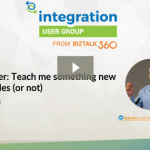
by Sandro Pereira | May 24, 2017 | BizTalk Community Blogs via Syndication
Last Monday I presented, once again, a session in the Integration Monday series. This time the topic was BizTalk Server: Teach me something new about Flat Files (or not). This was my fifth session that I deliver:
And I think will not be the last! However, this time was different for many aspects and in a certain way it was a crazy session… Despite having some post about BizTalk Server: Teach me something new about Flat Files on my blog, I didn’t have time to prepare this session (sent to a crazy mission for a client and also because I had to organize the integration track on TUGA IT event), I had a small problem in my BizTalk Server 2016 machine in which I had to switch to my BizTalk Server 2013 R2 VM, interrupted by the kids in the middle of the session because the girls wanted me to have dinner with them (worthy of being in this series)… but it all ended well and I think it was a very nice session with two great real case samples:
- Removing headers from a flat file (CSV) using only the schema (without any custom pipeline component)
- And removing empty lines from a delimited flat file, again, using only the schema (without any custom pipeline component)
For those who were online, I hope you have enjoyed it and sorry for all the confusion. And for those who did not have the chance to be there, you can now view it because the session is recorded and available on the Integration Monday website. I hope you like it!
Session Name: BizTalk Server: Teach me something new about Flat Files (or not)
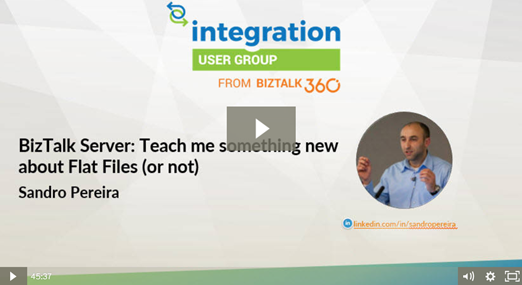
Session Overview: Despite over the year’s new protocols, formats or patterns emerged like Web Services, WCF RESTful services, XML, JSON, among others. The use of text files (Flat Files ) as CSV (Comma Separated Values) or TXT, one of the oldest common patterns for exchanging messages, still remains today one of the most used standards in systems integration and/or communication with business partners.
While tools like Excel can help us interpret such files, this type of process is always iterative and requires few user tips so that software can determine where there is a need to separate the fields/columns as well the data type of each field. But for a system integration (Enterprise Application Integration) like BizTalk Server, you must reduce any ambiguity, so that these kinds of operations can be performed thousands of times with confidence and without having recourse to a manual operator.
In this session we will first address: How we can easily implement a robust File Transfer integration in BizTalk Server (using Content-Based Routing in BizTalk with retries, backup channel and so on).
And second: How to process Flat Files documents (TXT, CSV …) in BizTalk Server. Addressing what types of flat files are supported? How is the process of transforming text files (also called Flat Files) into XML documents (Syntax Transformations) – where does it happen and which components are needed. How can I perform a flat file validation?
Integration Monday is full of great sessions that you can watch and I will also take this opportunity to invite you all to join us next Monday.
Author: Sandro Pereira
Sandro Pereira lives in Portugal and works as a consultant at DevScope. In the past years, he has been working on implementing Integration scenarios both on-premises and cloud for various clients, each with different scenarios from a technical point of view, size, and criticality, using Microsoft Azure, Microsoft BizTalk Server and different technologies like AS2, EDI, RosettaNet, SAP, TIBCO etc. He is a regular blogger, international speaker, and technical reviewer of several BizTalk books all focused on Integration. He is also the author of the book “BizTalk Mapping Patterns & Best Practices”. He has been awarded MVP since 2011 for his contributions to the integration community. View all posts by Sandro Pereira

by Vignesh Sukumar | May 24, 2017 | BizTalk Community Blogs via Syndication
Techorama is a yearly International Technology Conference which takes place at Metropolis, Antwerp. With 1500+ physical participants across the globe, the stage was all set to witness the intelligence of Azure. Among the thousands of virtual participants, I am happy to document the Keynote presented by Scott Guthrie, Executive Vice President of Cloud and Enterprise Group, Microsoft on Developing with the cloud. The most interesting feature of this demo is, Scott has scaled the whole demo on a Scenario driven approach from the perspective of a common developer. Let me take you through this keynote quickly.
Azure Mobile app
The Inception of cloud inside a mobile! Yes, you heard it right. Microsoft team has come up with Azure App for IOS/Android/Windows to manage all your cloud services. You can now easily manage all your cloud functionalities from Mobile.
Integrated Bashshell Client
Now the Bash Shell is integrated into the azure cloud to manage/retrieve all the azure services with just a type of a command. The Bash Shell client is opened in the browser pop-up and get connected to the cloud without any keys. More of the Automation scripts in future can get executed easily with this Bash in place. Also, it provides a CLI documentation for the list of commands/arguments. You can expect a Powershell client soon!
Application Map
The flow between different cloud services and their status with all diagnostic logs and charts are displayed in the dashboard level. As a top-down approach, you can get to the in-depth level of tracking per instance based on failure/success/slow response scenarios with all diagnostics, stack trace and creation of a work item from the failure stack traces. From the admin/operations perspective, this feature is a great value add.
Stack trace with Work item creation
Security Center
Managing the security of the cloud system could be a complex task. With the Security center in place, we can easily manage all the VMs/other cloud services. The machine learning algorithms at the backend will fetch all the possible recommendations for an environment or the services.
Recommendations
The possible recommendations for virtual machines are provided with the help of Machine learning Algorithms.
Essentials for Mobile success
To deliver a seamless mobile experience to the user, you need to have an interactive user-friendly UI, BTD (Build, Test, Deploy automation) and scalability with the cloud infrastructure. These are the essentials for Mobile success and Microsoft with a Xamarin platform has nailed it.
A favorite area of mine has been added with much needed intelligent feature. Xamarin – VS2017 combo is now makings its step into a real-time debugging!!!
You can pair up your iPhone/any mobile device to the visual studio with the Xamarin Live player which allows you to perform live debugging. Dev-Ops support to Xamarin has now been extended, you can now make a build-test-deploy to any firmware connected to the cloud as like a Continuous Integration Build. Automation in testing and deployment for the mobile framework is the best part. You can get the real-time memory usage statistics for your application on a single window. Also, you can now run VS2017 on IOS as well. 🙂
The mobile features have not stopped with this. The VS Mobile center is also integrated here to make a staging test with your friend’s community to get feedback on your mobile application before we submit to any mobile stores. Cool, isn’t it.
SQL server 2017
Scott also revealed some features of upcoming SQL server 2017, which has a capability to run on Linux OS and Docker apart from Windows.
The new SQL Server 2017 has got Adaptive Query Processing and Advance Machine Learning features and can offer in-memory support for advanced analytics. Also, SQL server is capable of seamless failovers between on-premise and cloud SQL with no downtime along with Azure Database migration service.
Azure Database- SQL Injection Alerts
SQL injection could be the most faced problems of an application. As a remedy, Azure SQL database now can detect the SQL injection by machine learning algorithms. It can send you the alert when an abnormal query gets executed.
Showing the vulnerability in the query
New Relational Database service
The Relational Database service is now extended to PostgreSQL as a service and MySQL as a service which can seamlessly integrate with your application.
Data at Planet scale: COSMOS-DB
This could be the right statement to explain Cosmos DB. The Azure has come with Globally distributed multi-model database service for higher scalability and geographical access. You can easily replicate/mirror/clone the database based on the user base to any geographical location. To give you an example you can scale from Giga to Petabytes of data and from Hundreds to Millions of transactions with all metrics in place. And this makes the name COSMOS!
Scott has also shown us a video on how a JET online retailer is using cosmosDB and chat bot which runs with the Cosmos DB to answer intelligent human queries. With Cosmos DB and Gremin API you can retrieve the comprehensive graphical analysis of the data. Here, he showed us the Marvel comics characters and friends chart of Mr.Stark, quite cool!
Convert exist apps to Container based microservice Architecture
You may all wonder how to make your existing application to the Azure container based architecture and here is a solution with the support of Docker. In your existing application project, you can easily add the Docker which makes you run your application on the image of ASP.net with which it can easily get into the services of cloud build-deploy-test framework of continuous integration. A simple addition of Docker metadata file has made the Dev-ops much easier.
Azure stack
There are a lot of case studies which indicates the love towards azure functionalities but enterprises were not able to use it for tailor-made solutions. There comes an Azure-Stack, a private cloud hosting capability for your data center to privatize and use all cloud expertise on your own ground.
Conclusion
As more features including Azure Functions, Service Fabric, etc. are being introduced, this gist of keynote would have given you the overall view on The Intelligent Cloud and much more to come on the floor: tune to Techorama channel9 for more updates from 2nd-day events. With cloud scaling out with new capabilities, there will never be an application in future without rel on ing cloud services.
Happy Cloud Engineering!!!
Author: Vignesh Sukumar
Vignesh, A Senior BizTalk Developer @BizTalk360 has crossed half a decade of BizTalk Experience. He is passionate about evolving Integration Technologies. Vignesh has worked for several BizTalk Projects on various Integration Patterns and has an expertise on BAM. His Hobbies includes Training, Mentoring and Travelling View all posts by Vignesh Sukumar
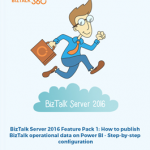
by Sandro Pereira | May 23, 2017 | BizTalk Community Blogs via Syndication
After some request by the community and after I publish in my blog as a season of blog posts, Step by step configuration to publish BizTalk operational data on Power BI is available as a whitepaper!
Recently, the Microsoft Product team released a first feature pack for BizTalk Server 2016 (only available for Enterprise and Developer edition). This whitepaper will help you understand how to install and configure one of the new features of BizTalk Server 2016:
- Leverage operational data – View operational data from anywhere and with any device using Power BI, works and how we can configure it.
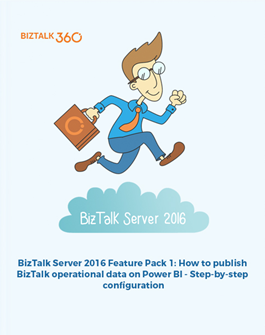
What to expect about Step by step configuration to publish BizTalk operational data on Power BI
This whitepaper will give a step-by-step explanation of what component or tools you need to install and configure to enable BizTalk operational data to be published in a Power BI report.
Table of Contents
- About the Author
- Introduction
- What is Operational Data?
- System Requirements to Enable BizTalk Server 2016 Operational Data
- Step-by-step Configuration to Enable BizTalk Server 2016 Operational Data Feed
- First step: Install Microsoft Power BI Desktop
- Second step: Enable operational data feed
- Third step: Use the BizTalk Server Operational Data Power BI template to publish the report to Power BI
- Fourth step: Connect Power BI BizTalkOperationalData dataset with your on-premise BizTalk environment
Where I can download it
You can download the whitepaper here:
I would like to take this opportunity also to say thanks to my amazing team of BizTalk360 for the proofreading and for once again join forces with me to publish for free another white paper.
I hope you enjoy reading this paper and any comments or suggestions are welcome.
Author: Sandro Pereira
Sandro Pereira lives in Portugal and works as a consultant at DevScope. In the past years, he has been working on implementing Integration scenarios both on-premises and cloud for various clients, each with different scenarios from a technical point of view, size, and criticality, using Microsoft Azure, Microsoft BizTalk Server and different technologies like AS2, EDI, RosettaNet, SAP, TIBCO etc. He is a regular blogger, international speaker, and technical reviewer of several BizTalk books all focused on Integration. He is also the author of the book “BizTalk Mapping Patterns & Best Practices”. He has been awarded MVP since 2011 for his contributions to the integration community. View all posts by Sandro Pereira





















 Microsoft Integration Stencils Pack for Visio 2016/2013 (10,1 MB)
Microsoft Integration Stencils Pack for Visio 2016/2013 (10,1 MB)


